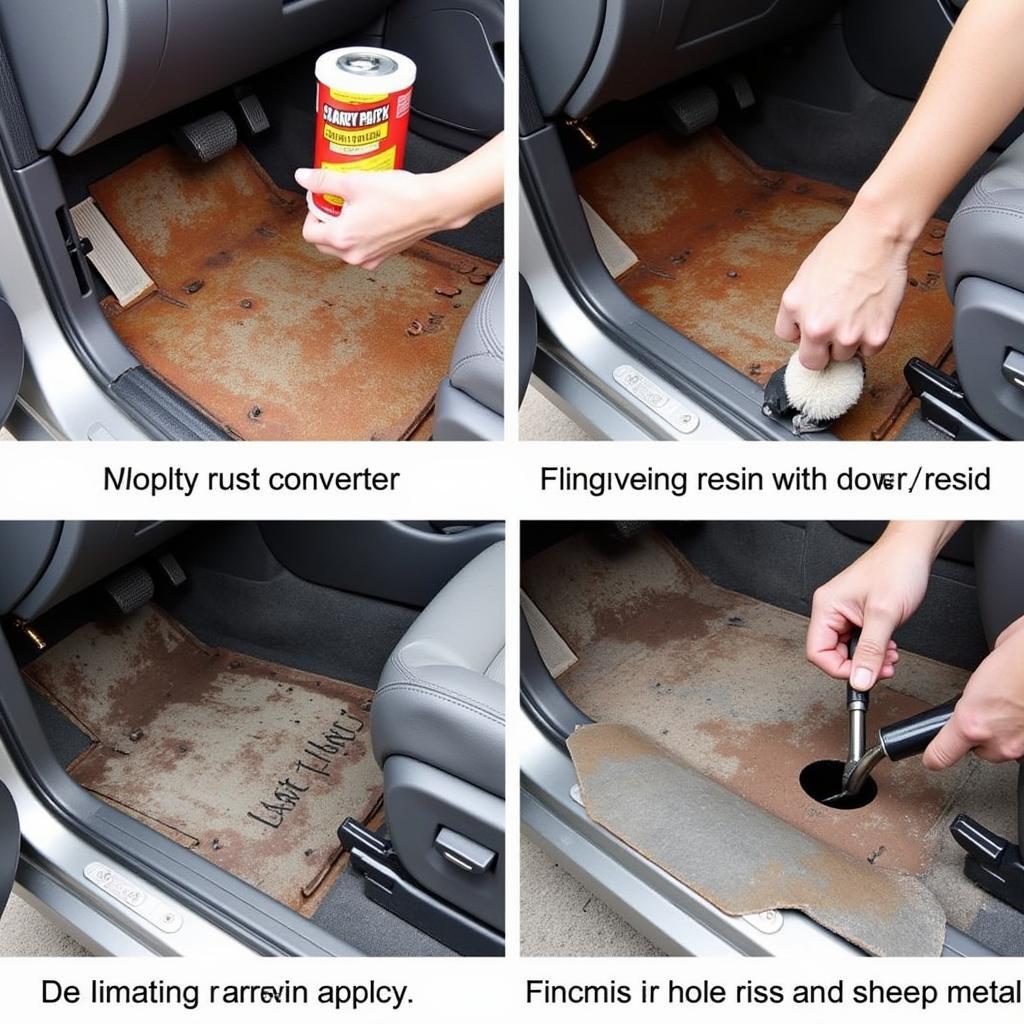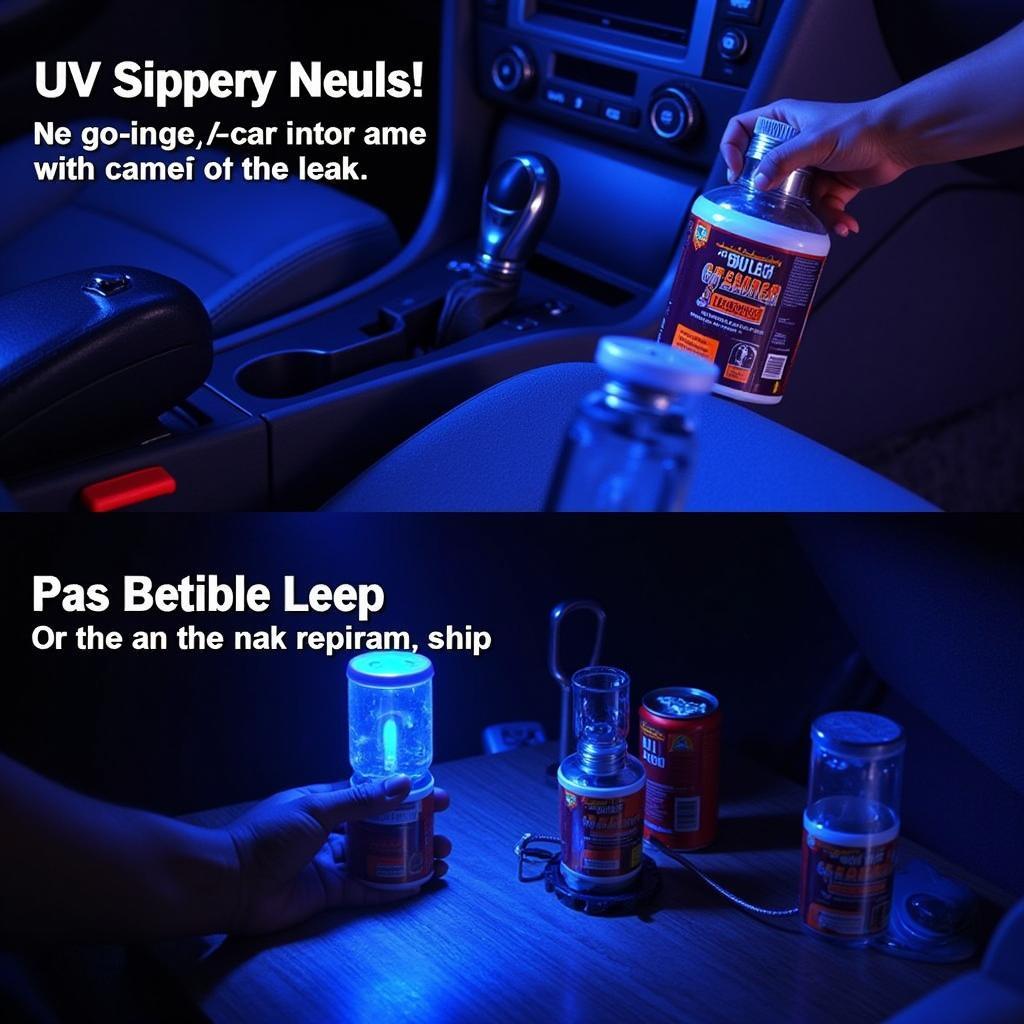Modern vehicles are equipped with a network of sensors that constantly monitor various systems, making it possible to Automatically Diagnose Car Problems With Sensor data. This technology offers a significant advantage over traditional diagnostic methods, allowing for quicker identification of issues and potentially preventing costly repairs.
Similar to how to diagnose car problems with obd2, sensor technology plays a crucial role. From engine performance to tire pressure, these sensors collect valuable data that can pinpoint the source of a problem. Understanding how these sensors work and how to interpret the data they provide can empower car owners, mechanics, and technicians to address car issues efficiently.
How Sensors Help Automatically Diagnose Car Problems
Sensors act as the eyes and ears of your car’s computer system, continuously monitoring various parameters. When a sensor detects a deviation from the expected range, it triggers a signal that alerts the car’s computer. This signal can manifest as a warning light on the dashboard, a change in vehicle performance, or a stored diagnostic trouble code (DTC). These DTCs can be retrieved using an OBD-II scanner, providing valuable insights into the nature of the problem.
For example, a faulty oxygen sensor can lead to decreased fuel efficiency and increased emissions. The sensor detects an imbalance in the air-fuel mixture and transmits this information to the car’s computer. The computer then adjusts the fuel injection accordingly, but if the sensor continues to malfunction, it will trigger a check engine light and store a corresponding DTC.
Types of Sensors Used for Car Diagnostics
A variety of sensors contribute to the automatic diagnosis of car problems. Some of the most common include:
- Oxygen Sensors: Monitor the oxygen content in the exhaust gases, crucial for maintaining optimal fuel efficiency and emissions.
- Mass Airflow (MAF) Sensors: Measure the amount of air entering the engine, influencing fuel injection and overall engine performance.
- Coolant Temperature Sensors: Monitor the engine coolant temperature, preventing overheating and ensuring efficient engine operation.
- Manifold Absolute Pressure (MAP) Sensors: Measure the pressure in the intake manifold, providing data for fuel injection and ignition timing calculations.
- Throttle Position Sensors: Determine the position of the throttle pedal, influencing engine speed and responsiveness.
- Crankshaft Position Sensors: Monitor the crankshaft’s position, crucial for engine timing and fuel injection. Problems with this sensor can sometimes resemble a crankshaft problem car won’t start 2006 ford focus zx4 situation.
- Camshaft Position Sensors: Monitor the camshaft’s position, ensuring proper valve timing and engine synchronization.
- Wheel Speed Sensors: Measure the rotational speed of each wheel, contributing to anti-lock braking systems (ABS) and stability control. These sensors are especially important for vehicles with esc problem in car.
Interpreting Sensor Data for Accurate Diagnosis
While sensors can automatically detect problems, interpreting the data they provide requires some knowledge. Using an OBD-II scanner allows access to the DTCs stored by the car’s computer. These codes provide a starting point for diagnosing the issue.
However, simply reading the code is not enough. It’s essential to understand the context of the code and consider other factors that might be contributing to the problem. For instance, a code indicating a faulty oxygen sensor could also be caused by a vacuum leak or a problem with the fuel system.
Benefits of Using Sensors for Car Diagnostics
The use of sensors for car diagnostics offers numerous benefits:
- Early Problem Detection: Sensors can detect problems in their early stages, often before they cause noticeable symptoms. This allows for preventative maintenance and potentially avoids major repairs.
- Improved Accuracy: Sensor data provides precise information about the car’s systems, leading to more accurate diagnoses and targeted repairs.
- Reduced Diagnostic Time: Automatically diagnosing car problems with sensor data can significantly reduce the time required to identify the root cause of an issue. This is a huge advantage over traditional diagnostic methods, which often involve a lengthy process of elimination.
- Cost Savings: Early problem detection and accurate diagnosis can lead to cost savings by preventing further damage and reducing repair time.
Just as with car shifting problems, sensor diagnostics can help identify the root cause quickly. Similarly, stop start cars problems can also be efficiently diagnosed using sensor technology.
Conclusion
Automatically diagnosing car problems with sensor technology is revolutionizing the automotive repair industry. By understanding how these sensors work and how to interpret the data they provide, car owners, mechanics, and technicians can effectively address car issues and ensure optimal vehicle performance. For personalized assistance with your vehicle’s diagnostics, connect with AutoTipPro at +1 (641) 206-8880 or visit our office at 500 N St Mary’s St, San Antonio, TX 78205, United States.






Leave a Reply